Development of a challenge-protective vaccine concept by modification of the viral RNA-dependent RNA polymerase of canine distemper virus
- PMID: 17898047
- PMCID: PMC2168841
- DOI: 10.1128/JVI.01385-07
Development of a challenge-protective vaccine concept by modification of the viral RNA-dependent RNA polymerase of canine distemper virus
Abstract
We demonstrate that insertion of the open reading frame of enhanced green fluorescent protein (EGFP) into the coding sequence for the second hinge region of the viral L (large) protein (RNA-dependent RNA polymerase) attenuates a wild-type canine distemper virus. Moreover, we show that single intranasal immunization with this recombinant virus provides significant protection against challenge with the virulent parental virus. Protection against wild-type challenge was gained either after recovery of cellular immunity postimmunization or after development of neutralizing antibodies. Insertion of EGFP seems to result in overattenuation of the virus, while our previous experiments demonstrated that the insertion of an epitope tag into a similar position did not affect L protein function. Thus, a desirable level of attenuation could be reached by manipulating the length of the insert (in the second hinge region of the L protein), providing additional tools for optimization of controlled attenuation. This strategy for controlled attenuation may be useful for a "quick response" in vaccine development against well-known and "new" viral infections and could be combined efficiently with other strategies of vaccine development and delivery systems.
Figures
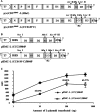
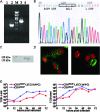

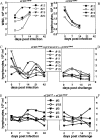
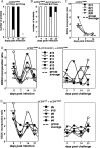
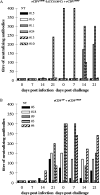
Similar articles
-
Recombinant canine distemper virus serves as bivalent live vaccine against rabies and canine distemper.Vaccine. 2012 Jul 20;30(34):5067-72. doi: 10.1016/j.vaccine.2012.06.001. Epub 2012 Jun 12. Vaccine. 2012. PMID: 22698451
-
DNA vaccines encoding proteins from wild-type and attenuated canine distemper virus protect equally well against wild-type virus challenge.Arch Virol. 2012 Oct;157(10):1887-96. doi: 10.1007/s00705-012-1375-y. Epub 2012 Jun 20. Arch Virol. 2012. PMID: 22714870
-
Inactivated Recombinant Rabies Viruses Displaying Canine Distemper Virus Glycoproteins Induce Protective Immunity against Both Pathogens.J Virol. 2017 Mar 29;91(8):e02077-16. doi: 10.1128/JVI.02077-16. Print 2017 Apr 15. J Virol. 2017. PMID: 28148801 Free PMC article.
-
Evaluation of synthetic infection-enhancing lipopeptides as adjuvants for a live-attenuated canine distemper virus vaccine administered intra-nasally to ferrets.Vaccine. 2012 Jul 20;30(34):5073-80. doi: 10.1016/j.vaccine.2012.05.079. Epub 2012 Jun 21. Vaccine. 2012. PMID: 22705079
-
Canine distemper virus.Vet Clin North Am Small Anim Pract. 2008 Jul;38(4):787-97, vii-viii. doi: 10.1016/j.cvsm.2008.02.007. Vet Clin North Am Small Anim Pract. 2008. PMID: 18501278 Review.
Cited by
-
Domain structure of Lassa virus L protein.J Virol. 2011 Jan;85(1):324-33. doi: 10.1128/JVI.00721-10. Epub 2010 Oct 27. J Virol. 2011. PMID: 20980514 Free PMC article.
-
Nanoparticles of conformation-stabilized canine distemper virus hemagglutinin are highly immunogenic and induce robust immunity.Virol J. 2021 Nov 22;18(1):229. doi: 10.1186/s12985-021-01702-0. Virol J. 2021. PMID: 34809642 Free PMC article.
-
Self-assembling ferritin nanoparticles coupled with linear sequences from canine distemper virus haemagglutinin protein elicit robust immune responses.J Nanobiotechnology. 2022 Jan 10;20(1):32. doi: 10.1186/s12951-021-01229-0. J Nanobiotechnology. 2022. PMID: 35012571 Free PMC article.
-
Generation of Defective Interfering Particles of Morbilliviruses Using Reverse Genetics.Methods Mol Biol. 2024;2808:57-70. doi: 10.1007/978-1-0716-3870-5_5. Methods Mol Biol. 2024. PMID: 38743362
-
Stable Attenuation of Human Respiratory Syncytial Virus for Live Vaccines by Deletion and Insertion of Amino Acids in the Hinge Region between the mRNA Capping and Methyltransferase Domains of the Large Polymerase Protein.J Virol. 2020 Nov 23;94(24):e01831-20. doi: 10.1128/JVI.01831-20. Print 2020 Nov 23. J Virol. 2020. PMID: 32999025 Free PMC article.
References
-
- Appel, M. J., and B. A. Summers. 1995. Pathogenicity of morbilliviruses for terrestrial carnivores. Vet. Microbiol. 44:187-191. - PubMed
-
- Barrett, T. 1999. Morbillivirus infections, with special emphasis on morbilliviruses of carnivores. Vet. Microbiol. 69:3-13. - PubMed
-
- Brown, D. D., F. M. Collins, W. P. Duprex, M. D. Baron, T. Barrett, and B. K. Rima. 2005. ‘Rescue’ of mini-genomic constructs and viruses by combinations of morbillivirus N, P and L proteins. J. Gen. Virol. 86:1077-1081. - PubMed
Publication types
MeSH terms
Substances
LinkOut - more resources
Full Text Sources
Other Literature Sources

